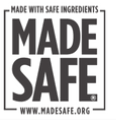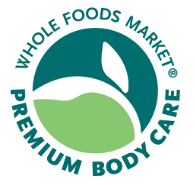
4 Ways to Choose Nontoxic Deodorant (and Why it Matters)
Nov 05, 2018by Angela Cummings and Sophia Ruan Gushée
Are you interested in nontoxic deodorant? But are you unsure about where to find it, or which one to choose?
People are increasingly trying to avoid potentially toxic chemicals in their deodorants, including pregnant women who are concerned about toxins in deodorant that may travel into the womb and affect their unborn child.
In this article, we’ll discuss which chemicals are found in conventional deodorants, how they may affect health, and practical nontoxic options for deodorant.
What Toxic Chemicals are in Conventional Deodorants?
While deodorants are often made of complex chemical formulas, four common ingredients of concern are below.
- Parabens. These chemicals have been detected in nearly every American tested, and are present in deodorant. Used as a preservative, parabens extend the shelf life of deodorants.
- Phthalates. Phthalates serve several purposes, like allowing scents to last longer, creating a silky feeling, and helping to soften the skin for other ingredients to penetrate the skin further.
- Fragrance. Fragrance is used to mask odors. Here are a few facts about fragrances.
- 40% of all personal care products (cosmetic products) tested had added fragrance, according to a 2015 study from the Environmental Working Group.
- One fragrance can be made of any number of chemicals.
- The fragrance industry has over 3,000 commonly used ingredients that are “go-to” for personal care products.
- Triclosan. Triclosan is a man-made antibacterial ingredient.
How Do These Chemicals Affect Your Health?
Ingredients in fragrances, parabens, phthalates, and triclosan may contribute to short- and long- term health effects. More detail is explained in A to Z of D-Toxing, In summary, examples of potential short term effects include:
- Irritant to eyes, nose, lungs
- Earaches in infants
- Respiratory distress/shortness of breath
- Allergic reactions
- Headaches
- Nausea
- Skin irritation
- Muscle weakness
Examples of potential long term effects include:
- Birth defects
- Cancer
- Feminization of US male babies
- Creation of antibiotic-resistant bacteria
The chemicals mentioned above may also adversely affect the endocrine, neurological, immune, reproductive, and nervous systems.
Practical Nontoxic Options
There are a few practical alternatives to conventional deodorants that some people find effective.
1. Crystal or rock deodorant.
What to look for: Look for crystal or rock deodorants. The one below contains one ingredient: pure mineral salt, according to the Amazon page.
How to use: Moisten with water before each use. Apply as needed throughout the day. (These typically wear off quicker than conventional deodorants so expect to need to apply more frequently.)

2. Natural herb extracts.
What to look for: lavender, rosemary, sage, and mint herb extracts. These are odor-neutralizer scents.
How to apply: Look for deodorants with natural herb extracts at your local natural food store. If they don’t carry it, look at online stores that carry natural or organic food.
3. Third-party certified by EWG.
What to look for: The Environmental Working Group has two ways to find healthier deodorants.
- EWG’s Skin Deep database. The EWG lists healthy and unhealthy deodorants, each with a health ranking. Their ranking system makes it easy to find the healthiest options.
- EWG Verified. The EWG Verified logo indicates that the product meets EWG’s criteria for a healthy product.
How to apply: In the Skin Deep database, search for deodorant. First, a list of EWG Verified products will pop up. These are the products verified by the EWG to meet their healthy criteria. To see deodorants ranked “A” or “B” in the EWG Skin Deep database, continue to scroll down. Ranked in order of healthiest, you’ll come across the “A” rated, then “B”, and so on. For the healthiest options, look for the EWG Verified, “A” or “B” rated products.
4. MadeSafe certified products and brands.
What to look for: Products and brands certified by MadeSafe, which is also by the Environmental Working Group.

How to use: Any products listed on MadeSafe’s certified product list are certified as safe by the company. The brands they work with have committed to MadeSafe’s criteria for healthier products.
5. Whole Foods Premium Body Care™ logo
What to look for: The Whole Foods' Premium Body Care™ logo as shown below.

How to use: Whole Foods has set some baseline standards to restrict certain chemicals. For even more strict standards, look for the Premium Body Care™ logo. According to the Whole Foods website, "These products meet the strictest standards for quality sourcing, environmental impact, results and safety. It identified more than 400 ingredients unacceptable for Premium Body Care."
Conclusion
People of all ages—including those exposed prenatally—may be affected by chemicals found in conventional deodorants. Potential effects include various short- to long-term health issues.
Practical nontoxic deodorants exist. They’re typically found in natural health stores and through online retailers, including Amazon. When choosing a deodorant, look for third-party certified products (by MadeSafe or Whole Foods Premium Body Care), or those ranking among the healthiest in the EWG Skin Deep database.
Stay connected with nontoxic lifestyle news and updates!
Receive our free Ruan Living Nontoxic Cleaning Guide when you join our email list.
Don't worry, your information will not be shared.
We hate SPAM. We will never sell your information, for any reason.







